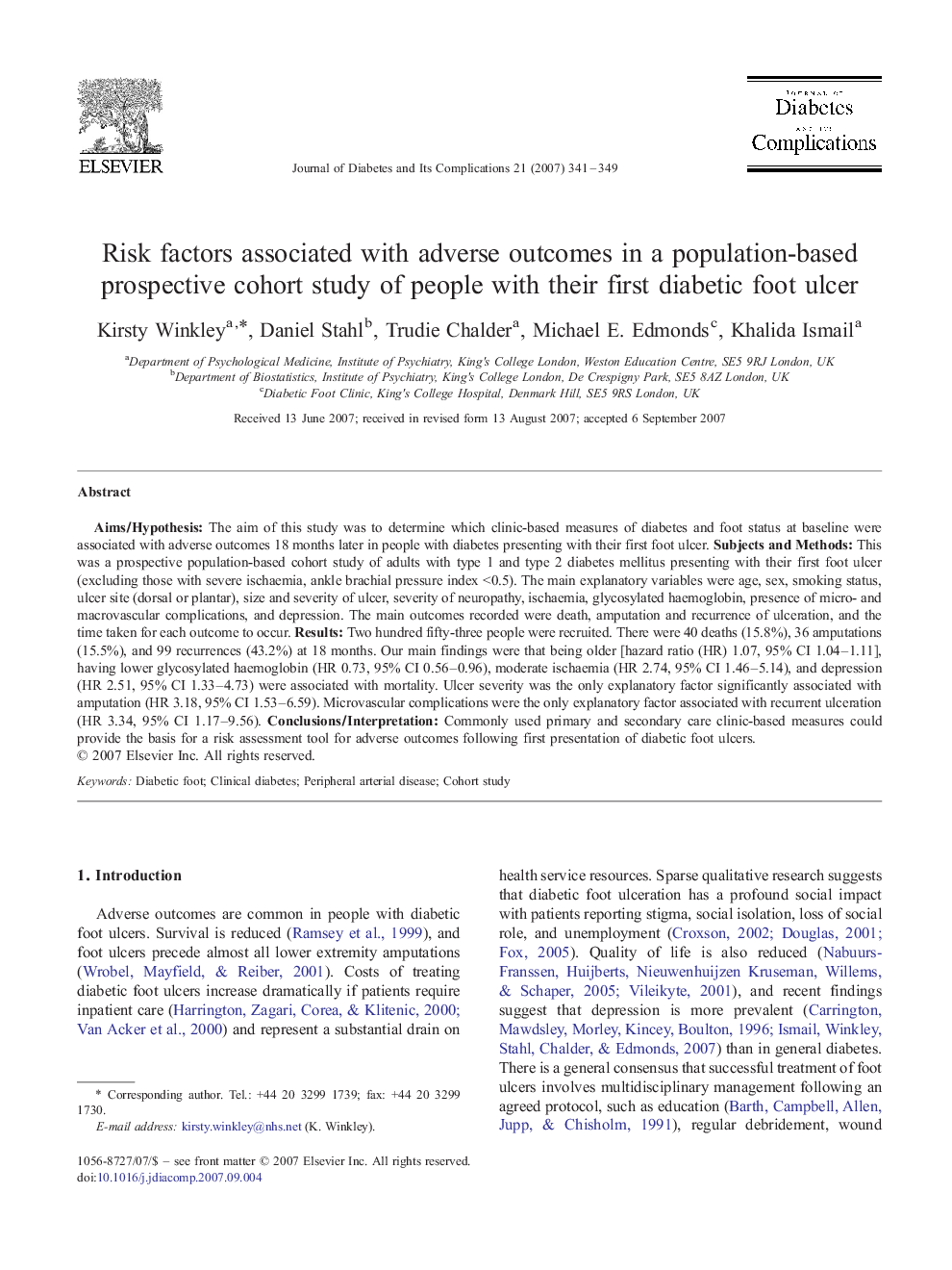| Article ID | Journal | Published Year | Pages | File Type |
|---|---|---|---|---|
| 2804715 | Journal of Diabetes and its Complications | 2007 | 9 Pages |
Aims/HypothesisThe aim of this study was to determine which clinic-based measures of diabetes and foot status at baseline were associated with adverse outcomes 18 months later in people with diabetes presenting with their first foot ulcer.Subjects and MethodsThis was a prospective population-based cohort study of adults with type 1 and type 2 diabetes mellitus presenting with their first foot ulcer (excluding those with severe ischaemia, ankle brachial pressure index <0.5). The main explanatory variables were age, sex, smoking status, ulcer site (dorsal or plantar), size and severity of ulcer, severity of neuropathy, ischaemia, glycosylated haemoglobin, presence of micro- and macrovascular complications, and depression. The main outcomes recorded were death, amputation and recurrence of ulceration, and the time taken for each outcome to occur.ResultsTwo hundred fifty-three people were recruited. There were 40 deaths (15.8%), 36 amputations (15.5%), and 99 recurrences (43.2%) at 18 months. Our main findings were that being older [hazard ratio (HR) 1.07, 95% CI 1.04–1.11], having lower glycosylated haemoglobin (HR 0.73, 95% CI 0.56–0.96), moderate ischaemia (HR 2.74, 95% CI 1.46–5.14), and depression (HR 2.51, 95% CI 1.33–4.73) were associated with mortality. Ulcer severity was the only explanatory factor significantly associated with amputation (HR 3.18, 95% CI 1.53–6.59). Microvascular complications were the only explanatory factor associated with recurrent ulceration (HR 3.34, 95% CI 1.17–9.56).Conclusions/InterpretationCommonly used primary and secondary care clinic-based measures could provide the basis for a risk assessment tool for adverse outcomes following first presentation of diabetic foot ulcers.
